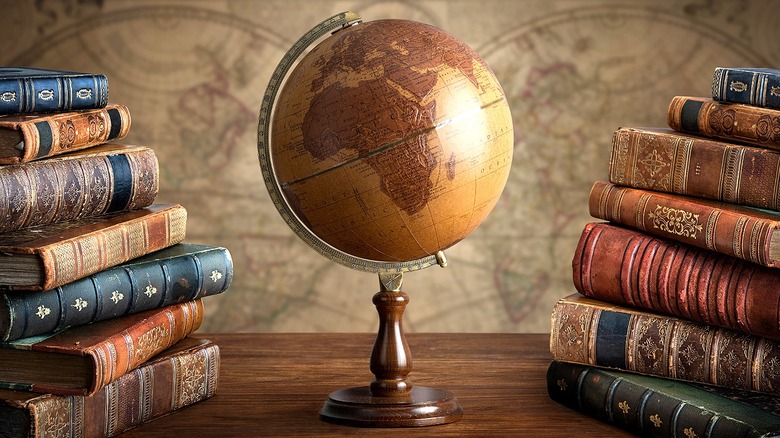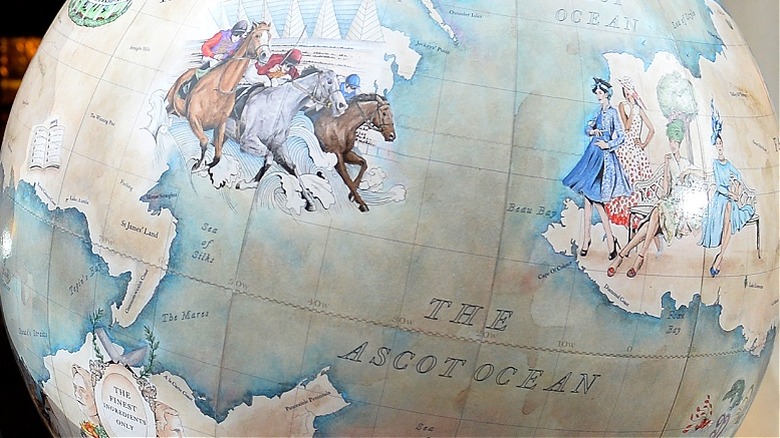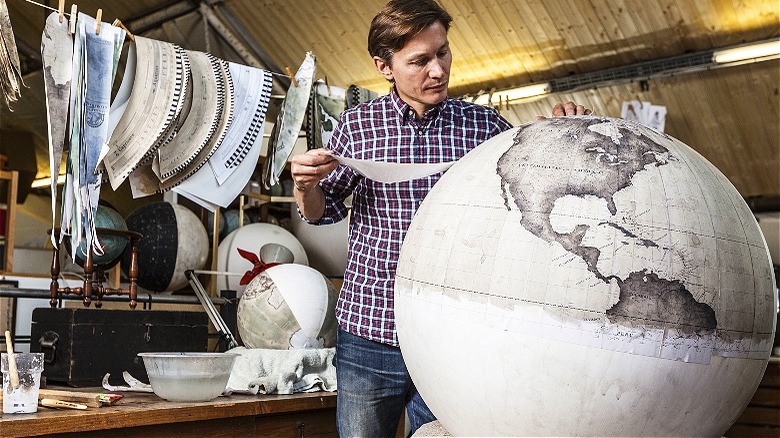Yes, People Still Buy Globes And You'll Be Surprised At The Price
Fine watches, luxury cars, caviar ... and globes? Yes. Beautiful globes are fetching astronomical prices today. For example, made-to-measure globes by Bellerby & Co. Globemakers of London can even run upward of $50,000, while Replogle Globes of Chicagoland makes an illuminated floor model called "The Diplomat" for around $15,000. Both examples are a far cry from the cost of a classic classroom globe — which still exist, too, and cost around $70, in comparison.
"I think now they're perhaps more becoming items of overt prestige," Joshua Nall, director of the Whipple Museum of the History of Science in Cambridge, England, noted to The Associated Press. "They're being bought as display pieces to look beautiful, which of course they always have been," he added.
Decades and centuries ago, globes weren't such a surprising luxury object. Instead, these spheres were often exchanged as gifts between high-ranking world leaders, as well as other power players. Of course, globes were also used for study and navigation. Yet, even in an age when people have instant access to GPS, can reference interactive maps of the entire galaxy, and glue their eyes to the internet practically every moment of every day, globes are still in some sort of demand. They're a little bit magical in that way, and likely always have been.
Beauty, novelty, and status may be key factors in the antiquated art form's modern prices, but are those the only reasons people pay top dollar to hold the world in their hand — or the corner of their office?
Who buys bespoke globes?
Globes have always represented a world frozen in time. A multidimensional, geopolitical snapshot. They've also always looked good in a library. A quick Pinterest search shows countless online-order globes lending a sense of style to an otherwise "meh" den. So, in a constantly changing world where inexpensive and interior design-friendly globes are a click away, why do craftspeople still expend so much effort making pricey globes? Who are the most likely purchasers of such pretty prestige these days?
As some might say: the usual suspects. The wealthy (including musicians) and powerful are still buying custom globes from companies like Bellerby & Co., and even giving them as gifts. Massive models, like Bellerby & Co.'s "The Churchill" globe, might just be the present for someone who has everything. German hardware magnate Reinhold Würth, for example, was given a Churchill as a symbol of his lifetime achievements. Another Bellerby customer used a custom globe to propose, instead of a ring.
Unlike other collectibles today, like, say, the rarest $20 gold coin or valuable retro video games, artisan globes are pricey for their personal qualities rather than their material stats. Globemaker Peter Bellerby even founded his globe company because he wanted the perfect globe for his father's 80th birthday.
Why some globes are pricey
In addition to the sheer size and magnitude of some bespoke globes, it's the craftsmanship behind them that helps set their high prices. To start, globemakers cut custom-made maps into pieces called "gores," then apply those pieces to spheres. The spheres themselves take feats of engineering to create, and months to sculpt, after many design meetings have taken place.
In addition to terrestrial globes (globes of Earth), some globemakers create celestial globes, and globes of other planets, as well as imaginary lands. Literally, not even the sky is the limit with these globes, just whatever is in a client's imagination, or the era the globemakers attempt to capture on their rotating canvas. And, just like in years past when globes were more actively used than just for décor or as a gift, careful research goes into making a custom globe as accurate as is possible; at least, per a client's instructions.
Whether expensive globes (like a ~$100,000 model from Bellerby & Co. that measures 50 inches across) are made with finely sketched paper, gemstones, or design influences from famous architects a la Replogle's Frank Lloyd Wright globes, they're made with painstaking attention to detail. Note, it takes upward of six months to create some of these globes (even up to three years), and their price reflects the fact that to the buyer, these globes are true works of art, more than spherical maps.


